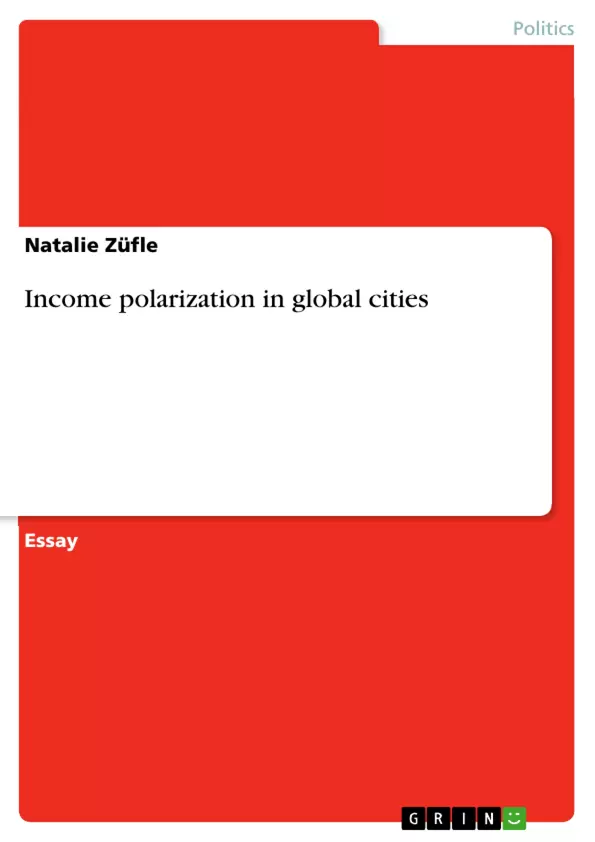Among various factors, migration and structural changes in employment contribute to widening the income gap between rich and poor. To meet these urban challenges, it is necessary to ease the financial burden for the poor by providing first and foremost a valuable education besides of other measures
Inhaltsverzeichnis (Table of Contents)
- Migration
- Structural Changes
- Solutions
Zielsetzung und Themenschwerpunkte (Objectives and Key Themes)
This essay analyzes the widening income gap between the rich and poor in global cities, attributing this polarization to two key factors: migration and structural changes in employment. The author delves into the causes of this polarization and outlines possible solutions to alleviate the challenges associated with it.
- The role of migration in contributing to income inequality in global cities.
- The impact of structural changes in the world of employment on income distribution.
- The emergence of a dual-city phenomenon, where wealth and poverty coexist in close proximity.
- The shrinking of the middle class in global cities due to economic shifts.
- Potential solutions for addressing income inequality and its associated challenges.
Zusammenfassung der Kapitel (Chapter Summaries)
The essay begins by highlighting the growing income inequality in global cities, a trend that has led to the emergence of "dual cities" where wealth and poverty coexist. Two key factors are identified: migration and structural changes in employment.
The migration section focuses on the push and pull factors that drive individuals from rural areas to urban centers. The lack of economic opportunities in rural areas, coupled with the promise of better education and healthcare in cities, contribute to a massive influx of people seeking better lives. These migrants often lack the skills needed for stable and well-paid jobs, leading them to take low-wage or informal jobs.
The section on structural changes examines the transformation of global cities into centers of finance and multinational corporations. This shift has led to the decline of urban industries and the rise of service-oriented businesses, creating a demand for highly skilled professionals while simultaneously generating low-level jobs in sectors like tourism and entertainment. This has contributed to a shrinking middle class and a widening income gap.
The final section explores potential solutions to alleviate income inequality. These include financial support for low-income residents, legalizing informal jobs, and providing access to better education to help individuals qualify for better jobs.
Schlüsselwörter (Keywords)
This essay explores the issue of income inequality in global cities. Key terms and concepts include migration, push and pull factors, structural changes, dual cities, service-oriented economy, shrinking middle class, informal sector, income polarization, and solutions for addressing income inequality.
- Quote paper
- Natalie Züfle (Author), 2008, Income polarization in global cities, Munich, GRIN Verlag, https://www.grin.com/document/180115



